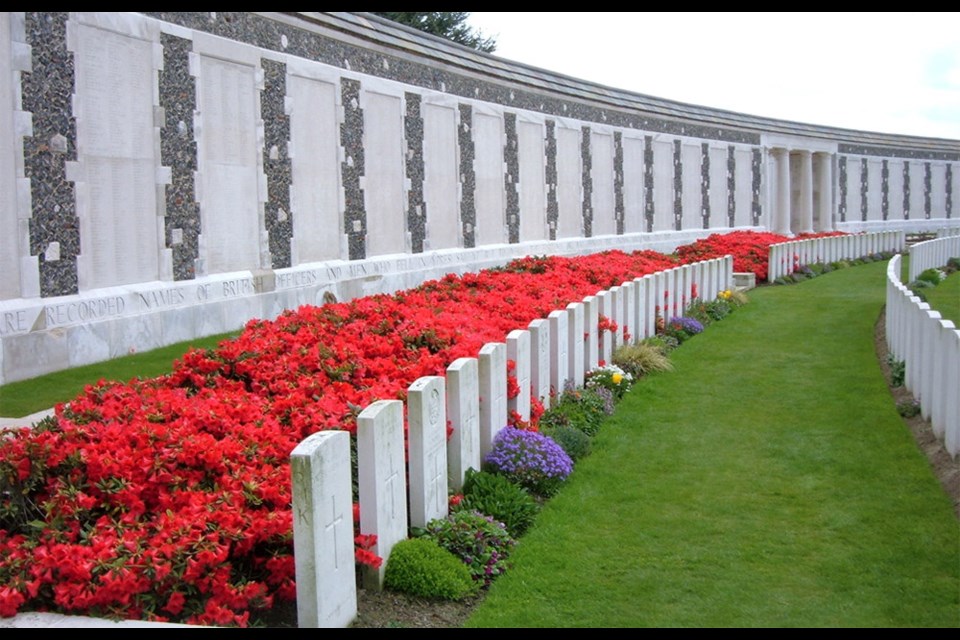For years, qathet resident Stewart Holmes had been seeking information on his great uncle Joseph Holmes, trying to verify information handed down within the family.
“I went at it again in the past few months to determine the facts based on the story I was told that my great uncle on my dad’s side of the family was killed in action on July 1, 1916, on the first day of the Battle of the Somme, and that’s all they knew,” said Stewart.
His great uncle was the oldest of three brothers and the family story goes that he, his grandfather and the other uncle, with 10 friends, all enlisted for the 12 shillings.
“But about 10 of them were found to be underage and were not accepted for enlistment, so no 12 shillings for them.”
As part of his research, Stewart went to the Imperial War Museums website, which features Lives of the First World War.
After inserting the name Joseph Holmes, he found there were 12 pages with 220 men listed with that name.
Scrolling through the pages, he found his great uncle’s name on the third page. He knew that was who he was looking for because of the service number: 263052. While Joseph was featured, there was no other information about him or his death on July 1, 1916, other than he was a private in the Northumberland Fusiliers of the British Army.
The only picture he had to go on was the original of Joseph in full uniform that hung on Stewart’s grandmother’s wall. The final time he had viewed it was in 1991, the last time he visited her.
“That photo disappeared after my Gran died in 1999,” explained Stewart.
In his many searches, he could only find one picture of a person named Joseph Holmes who was killed in action at the Somme.
He sent it to his mother, Edith, who had since moved from Powell River back to Ashington, England, where the family is from. She said that was not the great uncle he was seeking.
However, Edith was talking to some people in the community, and they directed her to speak to Stephen Humphrey, the Assets and Development Manager on the Ashington Town Council. In that conversation he told Edith that the council had implemented a project to find out all that had happened to military personnel from the town to bring some closure to the families of the missing. He asked for five minutes and her email.
“The information I was looking for was presented to me on October 27, 2024, exactly 107 years and one day from his death. Eerie in a way, like a message from the grave.”
It turns out his great uncle was not killed in action at the Battle of the Somme. In fact, he enlisted in August of 1915 and died on the muddy fields of Passchendaele on October 26 in 1917. His body to this day is still somewhere on the battlegrounds of Passchendaele.
Ashington has a memorial page for the men from there who died in what is called the Great War.
According to information on Joseph, he enlisted during the middle of August 1915 into the local battalion of the Territorial Force, the 1/7th Battalion Northumberland Fusiliers and it is very likely that he served on the Western Front during 1916.
In 1917, Joseph was transferred to the 1/5th Battalion.
He was killed in action during a disastrous attack across the muddy Passchendaele battlefield, west of Houthulst Forest. Three battalions of the 149th Brigade were involved in this ill-fated attack across a sea of mud. On the morning of the attack, rain fell from 3 am onwards at intervals during the day, making the already water-logged ground very difficult going.
The attack began at 5:40 am as the companies moved forward and then stopped, owing to heavy machine gun fire from the woods. Eventually, about 3 pm, the battalion was compelled with heavy losses to fall back on its original position.
Total casualties, killed, wounded and missing for the 1/5th were 12 officers and 439 men of other ranks, including Joseph.
He is commemorated on the Tyne Cot Memorial to the Missing in the West-Vlaanderen region of Belgium. The names of those from United Kingdom units are inscribed on panels arranged by the regiment under their respective ranks.
The memorial forms the northeastern boundary of Tyne Cot Cemetery, which is situated between Passchendaele (now known as Passendale) and Zonnebeke. The name "Tyne Cottages" or "Tyne Cotts" was given by the Northumberland Fusiliers to a group of German blockhouses, or pillboxes, situated near the level crossing on the Passchendaele-Broodseinde road. Three of these blockhouses still stand in the cemetery. It was from them that the artillery bombarded the Fusiliers who were trying to move forward.
There are 34,978 identified casualties within the memorial.
For Stewart, who was a cadet with the 2781 British Columbia Regiment (Duke of Connaught's Own) Powell River Army Cadets, the long search for information is over and questions he had were answered one hundred and seven years, plus one day, after the death of his great uncle.
Join the Peak's email list for the top headlines right in your inbox Monday to Friday.



